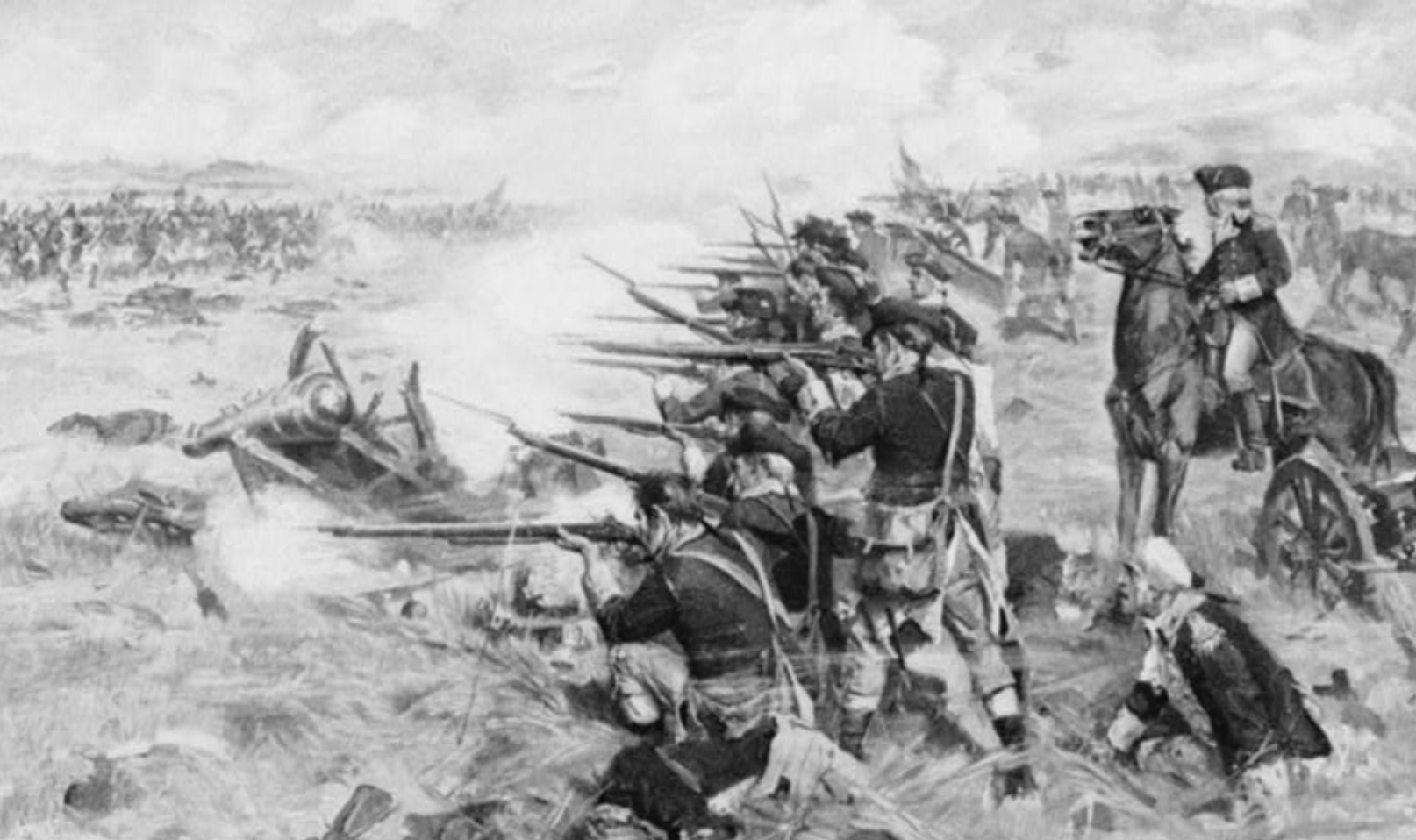Some wounds never heal — and some should not be forgotten.
One such scar, a British cannonball, has been lodged in a corner post at Keeler Tavern in Ridgefield, Conn., for nearly 250 years. On April 27, 1777, British Gen. William Tryon and his forces of nearly 2,000 men, marched southward in haste to Compo Beach, modern-day Westport. The prior night, the redcoats razed Danbury, which had become a critical supply depot for the colonists. The town was still “smoldering” in the wee hours that Sunday morning when the British evacuated, according to A Fight for Liberty: Southwestern Connecticut’s Role In The American Revolution.
En route, however, they were met by an American militia led by generals David Wooster and Benedict Arnold, the future traitor. What ensued was a nearly two-hour battle — the only inland conflict in Connecticut throughout the American Revolutionary War. There were more than 300 casualties, including Wooster, who sustained a fatal injury, dying several days after the battle.
While retreating, the British continued firing cannons, one of which now remains preserved at Keeler Tavern, a reminder of war’s lasting impact.
This is the story of the Battle of Ridgefield.
The Razing of Danbury
Connecticut had become “essential to supplying the war effort during the American Revolution,” as noted by Mount Vernon, earning the nickname, “The Provision State.” William Howe, the British commander-in-chief of the North American land forces, recognized it as such.
That winter, the British suffered two defeats against Gen. George Washington’s army at Trenton (Dec. 26, 1776) and Princeton (Jan. 3, 1777). Aiming to cripple American morale, Howe “decided to take the war to nearby Connecticut and New York,” believing it would “give his army a distinct advantage over Washington’s force and compel it to withdraw or disperse” from Morristown, N.J., where they had been camped.
His target: Danbury. There was a good strategic reason to strike the depot. According to A Fight for Liberty, the town — located 25 miles inland from Long Island Sound — had stored in homes, churches, and other buildings:
“…5,000 barrels of beef and pork; 1,000 barrels of flour; 80 hogsheads of biscuits; 100 barrels of rice; 60 hogsheads of rum and brandy; 20 hogsheads of wine, and 10 casks of medicines. There were also 1,000 tents; 60 iron kettles, a quantity of hospital bedding and sheets; some new wagons and entrenching tools; 400 axes; 100 barrels of sugar, molasses, and coffee; 5,000 pairs of shoes and stockings, and large quantities of wheat, corn, and oats stored in bulk in the buildings.”
It had become one of the largest supply depots for the Continental Army, according to News-Times. Indeed, an estimated 150 men, under the command of Col. Jedediah Huntington and Col. Joseph P. Cooke, guarded the town. Yet they would be no match for the oncoming onslaught.
Tryon, then serving as governor of occupied-New York, was tapped to raid the depot. Along with nearly 2,000 men, he landed at Compo Beach on April 25, 1777. By the following day, at 4 p.m., the British arrived in Danbury, encountering limited resistance during their march; though, Americans “sent messengers to spread the alarm” of Gen. Tryon, according to Connecticut History.
When the British entered Danbury, the American forces “established positions on the hills north and west of the town,” as noted by A Fight for Liberty; several others were holed up in a house owned by Daniel Starr, a major in the Continental Army. All was relatively peaceful until shots were fired from Starr’s home. From then on, chaos and destruction ensued.
The British stormed Starr’s house and killed everyone inside, including a slave named Ned Adams, who was first stabbed and then later beheaded after he tried to shoot an officer, according to A Fight for Liberty. After burning Starr’s home, the British turned their attention to the supplies. Although Gen. Tryon aimed to ransack the entire depot, the army failed to bring enough wagons and horses to accomplish the task. Time was also of the essence since he knew American troops were “gathering to attack” in Bethel, nearly three miles away, as noted by Connecticut History.
Instead, Gen. Tryon ordered his army to destroy most of the supplies. According to A Fight for Liberty, “Out of deference to the Church of England, [the British] took the military stores they found in the church on South street out of the building and burned them in a huge bonfire in the street.” More than 20 other buildings housing supplies — like the Congregational meetinghouse — were razed, as well as barns, farms, and homes owned by revolutionaries. Only Loyalist homes were spared.
The History of Ridgefield, Conn., published by Daniel W. Teller in 1878, recounts the harrowing inferno and destruction that followed:
“The smoke arising from the destruction of this property was strangulating and filled the whole air, while the streets ran with the melted pork and beef…. Meanwhile, by the light of their own homes, mothers, screening their babies from the bleak air with the scanty clothing that they had snatched up in haste and denied to themselves, crippled old men and palsied women, and little boys and girls clinging to their feeble protectors, made such haste as they could to save their lives from the fire, taking care to avoid the jeers of their comfortable Tory neighbors, who looked out from the doors and windows where the white cross glared in mockery, alike of God and of humanity; and to shun at the same time the unhallowed contact of the soldiers, they ran, crawled, or were carried upon their beds, into lonely lanes, damp pastures, and leafless woods.”
Some accounts suggest the British “caroused all over Danbury that night” and drank their fill of the rum and brandy; however, Gen. Tryon had “issued an order forbidding plundering or misconduct” during the raid, according to A Fight for Liberty.
In the end, the British hauled away enough cargo, though it weighed down their march back to Compo Beach. Gen. Tryon tried to avoid the American forces gathering in Bethel and therefore made his way toward Ridgefield. Despite his best efforts, he ran into the colonist’s counterattack.
The Battle
Gen. Tryon had to move quickly. Between 600-800 Americans were “coming fast through woods and mountains south of Danbury” while another 1,200 men, commanded by Gen. Alexander McDougall, marched “from Peekskill to intercept any British invasion of New York state,” according to A Fight for Liberty.
The British left Danbury at 8 a.m., moving through Ridgebury and around Lake Mamanasco, where they burned a grist mill belonging to patriot Isaac Keeler.
In late morning, Gen. Tryon’s forces halted to rest and eat lunch on North Salem Road in Ridgefield. Without warning, Gen. Wooster — along with 200 men — launched an attack. Though the skirmish was brief, the Americans took nearly 30 British soldiers captive, according to A Fight for Liberty. Gen. Tryon, flustered, could not assemble a counterattack, but nevertheless ordered his men to continue marching south.
However, the Americans were pesky fighters, harassing the British rear guard throughout the trek toward Ridgefield’s town center. About a mile away from the first skirmish, Gen. Wooster attacked again, this time to capture the British cannon. Gen. Tryon’s forces fired back, and a cannonball “landed near the American troops,” as noted by A Fight for Liberty. Undeterred, Gen. Wooster tried to rally his men; however, in the fray, he was struck by a bullet that ripped through his spine. The paralyzed American general fell off his horse. He would succumb to the wounds several days later; but the damage had been done. As a result of their commander falling in battle, the colonial forces retreated.
The British continued their march down Ridgefield Road. However, Brigadier Gen. Arnold and 400 men waited their arrival. At 11 a.m. that morning, the American forces quickly assembled a barricade across the “narrowest part of Ridgefield’s Main street (Route 35)” to block the British escape, according to A Fight for Liberty. At the same time, Arnold “stationed a battery of Continental artillery on top of a hill commanding a bridge that spanned a stream on the road to Compo Beach,” as noted by Connecticut History.
At 2 p.m., Gen. Tryon and nearly 2,000 men approached the barricade. The direct confrontation had come. According to A Fight for Liberty, the British artillery opened fire on the barricade; the Americans returned fire. However, amidst the chaos, Arnold realized Tryon’s troops had “forded the stream above the bridge and bypassed the Americans’ strong point,” as Connecticut History notes, and Arnold “had to settle for harassing the British column from the rear as they made their way back to their fleet at the end of their third day in Connecticut.”
Arnold was nearly killed that day. After his horse was shot from underneath him, a British soldier charged at the American commander. Before being bayoneted, Arnold shot and killed the soldier.
Gen. Tryon, though breaking through the barricade, suffered heavy losses over the two-hour battle, losing between 50-60 men and five officers, according to A Fight for Liberty. Meanwhile, during the battle, the British managed to burn more than five homes, even setting fire to Keeler Tavern (though this was eventually extinguished at the behest of David Hoyt, a Loyalist).
By day’s end, the British left Ridgefield and camped near Wilton. The following day, they evacuated around 5 a.m., and escaped on their vessels at Compo Beach.
A Renewed Spirit
The Battle of Ridgefield was not necessarily a “major battle that had a direct influence on a larger campaign,” according to American Battlefield. Gen. Washington believed as much, saying “the damage we sustained at Danbury was not so great . . . the chief loss [being tents].” However, he was inspired by the colonists’ response, writing:
“I am inclined to believe they [the British] will pursue such measures with a great degree of caution. For tho’ they afford themselves the stores at Danbury, yet it was with considerable loss and they are convinced whenever they make an impression, the Country will recur to arms.”
Practically, the battle did compel the Continental Army to station supplies more inland and “convinced Benedict Arnold to remain with the Continental Army,” as American Battlefield suggests. Before his treachery, Arnold proved to be a consequential hero in the early days of the war, risking life and limb for America, particularly at the Battle of Saratoga (Fall 1777), which “persuaded the French, Spanish and Dutch to join their cause,” according to History.com.
While the Battle of Ridgefield was the only inland encounter between the British and American troops during the Revolutionary War, Connecticut still endured numerous raids along the coast, including one led by Arnold in September 1781. Even Washington, when he toured the state as president in 1789, witnessed the “Destructive evidences of British cruelty,” which were still “visible both in Norwalk & Fairfield,” adding “there are the Chimneys of many burnt houses standing in them yet.”
Though small in the grand scheme of the war, the Battle of Ridgefield underscores Connecticut’s vital role in the Revolution, supplying troops and resources. As the 250th anniversary of the Declaration of Independence approaches in 2026, Ridgefield’s story, preserved in artifacts like the Keeler Tavern cannonball, serves as a reminder of the sacrifices made for liberty and the enduring need to protect those freedoms.
Our neighbors today and those yet unborn are counting on us, in our own humble way, to keep aflame the light of liberty. The Spirit of 1776, the same spirit that inspired our forefathers to chart a new course in human history and continues to inspire Yankee Institute, must be renewed.
This is the time to do so.
Till next time —
Your Yankee Doodle Dandy,
Andy Fowler

